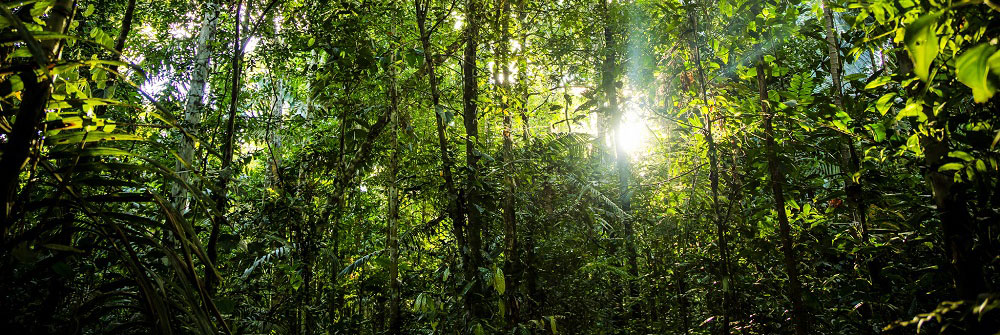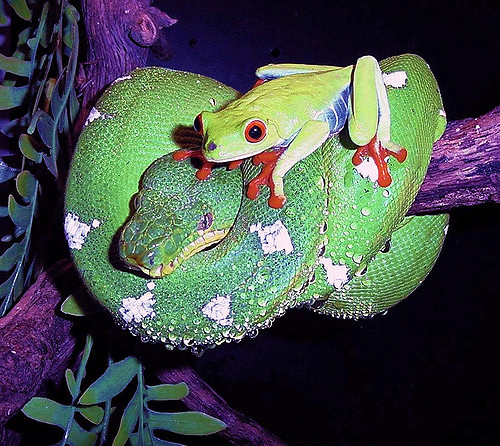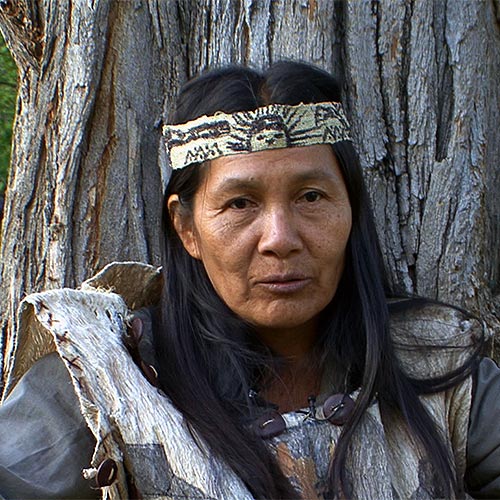Calling Back the Boas
by Gloria Ushigua

Love, Robin Johnson

The shaman of the boas is a frog, a very small frog that sings “jan, jan, jan,” but they are many, these frogs. If the boa has a small cut or even a big wound, he goes looking for the shamans, the frogs. He finds them and lies down in front of them, and many frogs come and start to cure the boa. Some sing, others chant, they have a kind of party, but they are healing, they’re doing things. If the wound is too big the frogs get a caterpillar that is called Misapo. They put the caterpillar in the wound. If it’s real big they put in one, two, three caterpillars. And these caterpillars are in charge of cleaning the wound. They clean, clean, clean, slowly, and the boa starts to heal little by little. When he is good and cured, the caterpillar turns into an insect that can fly and goes away. He was feeding, but also cleaning, healing. And that’s how they live amongst themselves.
One time a foreigner came to our village. He was studying the boas. And he said “I don’t know why these frogs gather around the boas.” He knew much about the boas, but he didn’t know why the frogs gathered around them. We wanted to tell this man about how the boas always call their shamans, their doctors, that they need to have these frogs where they are, but he took it as if it were a myth, a story. But that’s not the truth. These are real things that happen in the forest. This is how things are in the forest. Even the smallest ants have their responsibilities.
Excerpt from PARABOLA Volume 29, No. 3, THE SEEKER

Gloria Ushigua, President of the Association of Sapara Women, is a land and community defender from deep within the southeastern Ecuadorian Amazon, committed to maintaining the cultural identity and integrity of the Sápara peoples and promoting the rights of Indigenous women. She stands at the forefront of the regional movement to stop oil drilling – speaking out, advocating within the United Nations, and leading marches and demonstrations in response to violent policies that continue to open the Amazon of Ecuador to fossil fuel development and the subsequent pollution and displacement of Indigenous communities.
